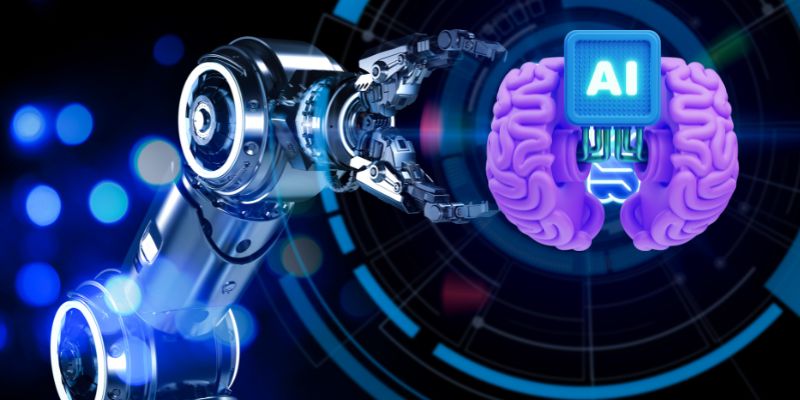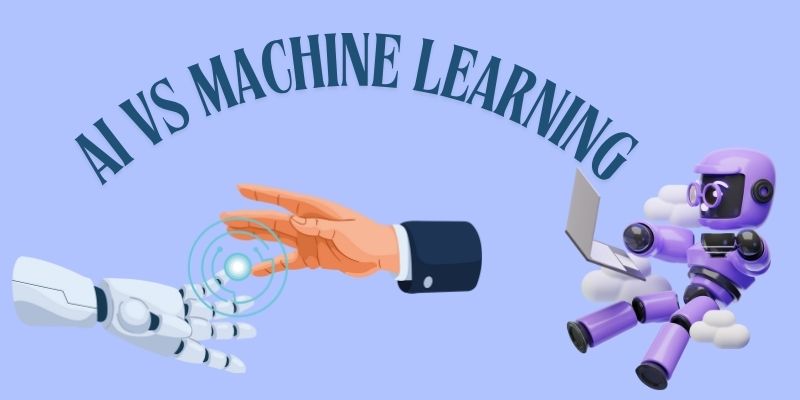AI vs Machine Learning: Artificial Intelligence (AI) and Machine Learning (ML) are two closely related concepts that are often confused with one another. While Machine Learning is a subset of AI, each plays a distinct role in the field of technology. In this article, we will explore the key differences between AI and Machine Learning, how they work together, and how both are driving innovation in modern technology. Understanding the relationship between AI vs Machine Learning is essential for grasping the future of intelligent systems.
What is AI?
Artificial Intelligence (AI) refers to the broad concept of creating machines or software that can perform tasks typically requiring human intelligence. The goal of AI is to make computers “smart” by enabling them to reason, solve problems, understand language, recognize images, and make decisions, all without human intervention.
Key Objectives of AI:
- Problem Solving: AI can help solve complex problems by mimicking human thought processes.
- Learning: AI can adapt and learn from experiences, improving over time.
- Decision Making: AI systems can make informed decisions based on data.
- Understanding Language: AI can interpret and process human languages, making it useful for chatbots and virtual assistants.
- Visual Perception: AI can analyze and interpret images, making it essential for tasks like facial recognition.
Examples of AI:
- Rule-Based Systems: Early AI systems, like expert systems, follow predefined rules to make decisions.
- Logic and Reasoning Systems: AI systems that use logic to solve problems.
- Planning Algorithms: AI can be used to create algorithms that plan tasks or actions.
What is Machine Learning?
Machine Learning (ML) is a specific subset of AI that involves teaching machines to learn from data and improve over time. Unlike traditional programming, where explicit instructions are given, ML uses data to help systems identify patterns and make decisions or predictions based on those patterns.
How Does Machine Learning Work?
Machine Learning algorithms analyze large datasets, identifying patterns and relationships that would be difficult or impossible for humans to find manually. These algorithms then use this information to make predictions or decisions about new, unseen data.
The key concept in ML is that it “learns” over time as it is exposed to more data, continuously improving its performance. This makes ML one of the most powerful tools in modern AI development.
Examples of Machine Learning Applications:
- Image Recognition: ML algorithms can identify objects or people in images (e.g., facial recognition).
- Spam Filters: ML is used to filter out unwanted emails by recognizing patterns in spam messages.
- Recommendation Systems: Websites like Netflix or YouTube use ML to recommend content based on user preferences.
- Predictive Models: ML is often used to predict stock prices or customer behavior based on historical data.
- Natural Language Processing (NLP): ML is used in NLP tasks like translation and chatbots to understand and generate human language.
AI vs Machine Learning: Key Differences
-
Scope: AI is the broader concept, aiming to create systems that can perform intelligent tasks like humans, while Machine Learning is a technique or method used to achieve AI.
-
Approach: AI may involve rule-based systems or traditional algorithms, whereas Machine Learning specifically relies on data to train models and improve over time.
-
Functionality: AI can be rule-based or data-driven, but Machine Learning always requires data to function and improve its performance.
-
Learning Process: AI systems may require explicit programming and rules, while Machine Learning systems “learn” automatically from experience and data.
How AI and Machine Learning Work Together
While AI encompasses a variety of techniques, Machine Learning is one of the most powerful and widely used methods to achieve AI. In fact, most of the advanced AI systems today, such as self-driving cars, chatbots, and recommendation systems, rely heavily on Machine Learning.
Machine Learning allows AI systems to learn from past experiences, adapt to new information, and improve their accuracy and decision-making capabilities over time. Essentially, Machine Learning serves as the engine driving many of AI’s capabilities.
Why Does AI vs Machine Learning Matter?
Understanding the difference between AI and Machine Learning is crucial for anyone involved in technology, whether you’re an aspiring data scientist, developer, or business owner. Knowing the distinction can help you make informed decisions about which technologies to use for specific tasks and how they can benefit your organization.
Machine Learning is currently one of the most important technologies within the AI field, driving advancements in everything from healthcare to finance, marketing, and even entertainment.
Conclusion: AI vs Machine Learning
In summary, AI is a broad field with the goal of creating intelligent machines capable of performing human-like tasks, while Machine Learning is a specific technique used to achieve AI by teaching systems to learn from data. Most modern AI systems rely heavily on Machine Learning to deliver high-performance, adaptive, and scalable solutions.
Understanding the relationship between AI and Machine Learning is essential for anyone looking to leverage these technologies effectively. By embracing the power of Machine Learning, businesses and developers can create more intelligent and efficient AI systems that continue to evolve and improve over time.
If you’re interested in exploring the world of AI and Machine Learning, stay updated on the latest trends and innovations to fully harness the potential of these technologies.
Follow Blockchain Bulletin Weekly for the lastest information!

